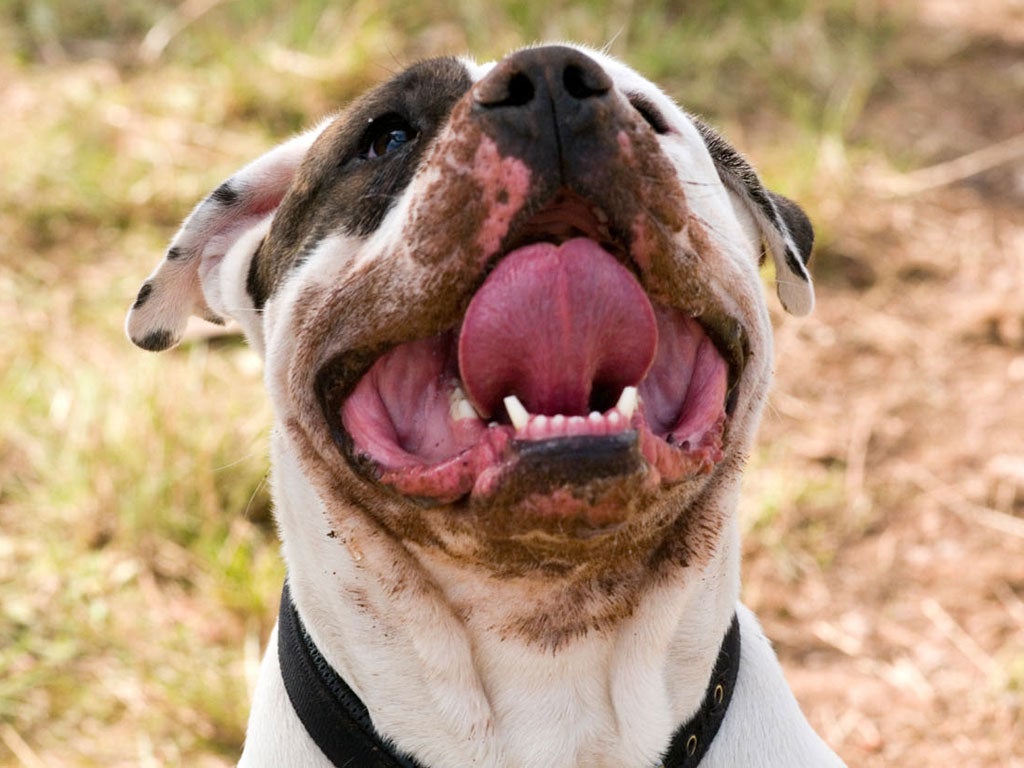Push for reform of Dangerous Dogs Act
With aggressive breeds again seen as status symbols, things need to change. By Alan Selby and Kevin Rawlinson

Abbie Varrow was happily jumping up and down on her friend's trampoline when she was attacked. "She was only out in the garden for two minutes," said her father, Tony. "The dog came over the fence at the bottom of my neighbour's garden and took one bite out of my daughter's face. She's probably scarred for life."
In that brief moment last month, Abbie, five, became the latest of a growing number of victims of dangerous dogs which have risen by 30 per cent over the last four years, according to NHS statistics. More than 6,000 people were treated in hospital in 2010/11 because of a dog attack with one in six of them involving under-10s.
The Kennel Club says the rise in attacks has been caused by the increased attractiveness of banned breeds, which it said are looked upon as "status dogs". Bill Lambert, a senior official with the Kennel Club, said the Dangerous Dogs Act has "highlighted certain breeds as being particularly dangerous, which has attracted some people towards these dogs".
A spate of high-profile cases has given added impetus to a campaign by families and animal welfare groups to persuade the Government to rewrite the discredited Dangerous Dogs Act, which bans four breeds but has been criticised by dog owners, victims families, police and breeders for being unworkable. The Metropolitan Police alone spends about £2m a year on kennelling dogs that have been seized under the Act.
The parents of four-year-old John Paul Massey, who was mauled to death by a pit bull terrier in 2009, handed in an appeal to Downing Street last week calling on David Cameron to give "urgent and immediate attention" to the issue on behalf of the "children and adults who have lost their lives and the thousands of people who sustain injuries, often serious".
They said the attacks highlighted the flaws in the law, which bans the pit bull terrier, the Japanese Tosa, the Dogo Argentino and the Fila Brasileiro, but many of the attacks have involved dogs not banned under the Act. Last week, a Staffordshire Bull Terrier – which is not banned – bit a 12-year-old girl and evaded attempts by police to stop it with tasers until it was shot dead in a park.
More than 1,500 dogs from banned breeds are also still allowed to live legally in the UK, because magistrates ruled that they did not pose a threat to the public, according to the Department for Environment Food and Rural Affairs (DEFRA). They have to be muzzled in public, kept on a lead, microchipped, registered, insured and neutered. Steve Goody, director of external affairs at Blue Cross, said: "The current Dangerous Dogs Act is totally inadequate. We need new legislation with tougher measures covering out-of-control dogs wherever they are and whatever the breed, allowing authorities to step in before attacks happen."
Animal welfare groups claim the increasing numbers of attacks are linked to the rise in aggressive dogs being bred and trained for hunting and dog-fighting. Some groups said they were training more investigators and bringing in ex-police officers to try to stem the practice.
"There seems to be an increase in wild animal welfare crime. We're increasingly picking up gangs who are urban-based but going out in the country, often with firearms and dogs, hunting and shooting wherever they can," said Joe Duckworth, chief executive of the League Against Cruel Sports.
Mark, a former special branch detective with 30 years of policing experience on anti-terrorism and organised crime work, now working in the field, said websites show owners posing with their pet's multiple animal victims to show them off or command a high price for an aggressive animal. "The big explosion has been through social networks. Now you can show what you've been doing on a fairly secure social network and show thousands of people what you've been doing," said the investigator.
In some of the most recent cases, a dog mauled five police officers in East London. The pit bull-type dog named Poison was shot by firarms officers. Five days later in Essex, Abbie Varrow was attacked. "We've got to keep assuring her that not all dogs are like that one," said Mr Varrow.
Recent research by injury lawyers First4lawyers suggested that nearly 30 per cent of people in Britain have been bitten by a dog, with attacks by Alsatians the most common. A DEFRA spokesman said the department was "very close" to putting proposals forward to reform the Act.
Subscribe to Independent Premium to bookmark this article
Want to bookmark your favourite articles and stories to read or reference later? Start your Independent Premium subscription today.

Join our commenting forum
Join thought-provoking conversations, follow other Independent readers and see their replies